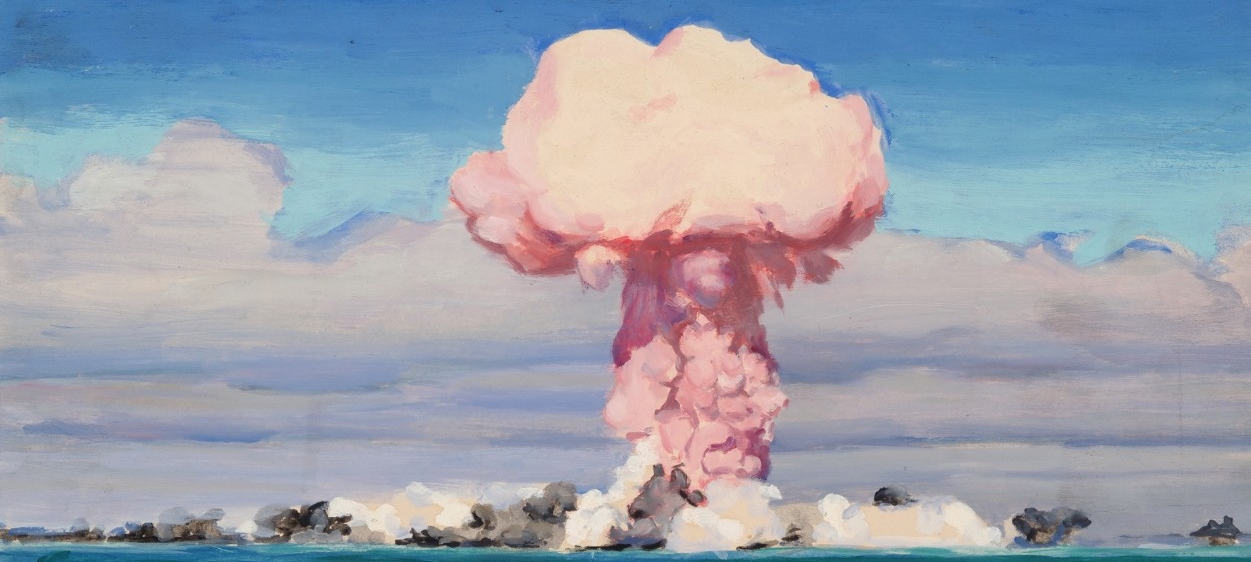
Operation Crossroads: Bikini Atoll
Operation Crossroads was an atmospheric nuclear weapon test series conducted in the summer of 1946 at Bikini Atoll in the Marshall Islands. The series consisted of two detonations, a low altitude test and a shallow water test. The devices, each with a yield of 21 kilotons, were named shots ABLE and BAKER. A planned third test, a deep underwater detonation, was canceled after the second test.
The series was intended to study the effects of nuclear weapons on warships, equipment, and material. These tests would provide important information on the survivability of warships in the event of nuclear war. Both the Navy and the Army Air Forces were, given the possible budgetary effects of such tests, very interested in the outcome of these experiments. From a scientific point of view, technical experiments were also planned on nuclear weapon explosion phenomena and radiation contamination.
In contrast to all later atmospheric nuclear tests, a large media contingent was present for the two Crossroads detonations. They were allowed to cover the test atomic bomb explosions "with sufficient thoroughness to satisfy the public as to the fairness and general results of the experiment." Quartered aboard USS Appalachian (AGC-1), 131 newspaper, magazine, and radio correspondents from the U.S., Australia, Canada, France, the Republic of China, the Soviet Union, and Britain covered the detonations, turning these experiments into major media events. In addition, the three artists presented here also recorded the project: Gunnery Sergeant Grant Powers, USMC, was the official combat artist for the operation while Lieutenant Commander Arthur Beaumont, USNR, and Captain Charles Bittinger, USNR, were observers.


